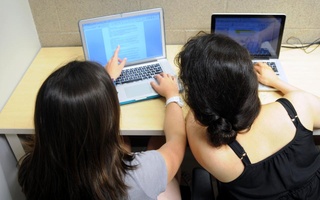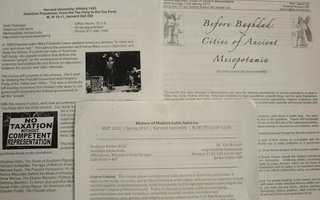With the recent announcement of an investigation into the allegations that 125 students cheated during the Government 1310 take-home final last spring, Harvard’s Faculty of Arts and Sciences has certainly accomplished its goal of promoting a conversation on academic dishonesty. Across the country, numerous publications have covered the issue, thrusting it to the forefront of public debate. While each account approaches the situation from a different angle, much of the discussion focuses on the ethics of collaboration.
The definition of collaboration has become increasingly nebulous, and the difference between acceptable and unacceptable collaboration even more so. Take home exams in particular have become uncomfortable gray areas in which both spheres often overlap. It falls on the university to articulate the boundaries of student collaboration; only through greater clarity can we hope to avoid an incident like this in the future.
Such a scandal is likely partially the product of the results-oriented culture that we see in many areas of this university, where students are often willing to trade ethical conduct for expedience. The instant gratification of appropriating another student’s ideas can seem particularly attractive as a result of this culture, where many behaviors can be excused as means to various ends. This dynamic necessitates stricter and clearer regulation of collaboration so as not to provide a further incentive to cut corners for short-term results.
It is worth noting the role technology plays in this situation. The proliferation of hardware capable of quickly and cheaply disseminating ideas has made information more readily accessible than ever before in the 376 years of Harvard’s existence. With students exposed to the ideas of thousands of individuals on any given subject that they can distribute nearly instantaneously, the temptation to share work is grater than ever. This only accentuates the need for clearer enunciation of the regulations surrounding working with classmates.
None of this is to say that the alleged acts of academic dishonesty were the result of confusion. The take-home exam expressly prohibited sharing thoughts or answers with other students or faculty—this was unambiguously stated in the instructions at the top of the test. If these transgressions did in fact happen, they were not the product of a misunderstanding, but the willful defiance of course policy. If guilty, the offending students are personally and exclusively responsible, and should be subject to the appropriate disciplinary action from the administrative board. That said, no punishment would address the underlying problem, which is a lack of awareness on campus.
While it is unclear exactly what form clarification should take, efforts to articulate appropriate academic conduct are not without precedent. In all expository writing courses, which are mandatory for freshmen, teaching fellows are responsible for devoting a session to outlining College rules on plagiarism, as well general discussion of the subject, especially in relation to digital sources. While its efficacy may be in question, the level of emphasis is not—this is a model that the administration should follow. The College puts considerable effort into educating undergraduates on the perils of taking from the work of fellow scholars; there should be equal focus on safeguarding the work of fellow students.
Read more in Opinion
Republicans Refusing MedicaidRecommended Articles
-
Harvard and MIT Share LibrariesHarvard and MIT have opened large parts of their library collections to undergraduates at both schools in a new partnership ...
-
Young Proposes Middle School PolicyAfter months of planning, Cambridge Public Schools Superintendent Jeffrey M. Young presented a short-term action plan for the system’s middle ...
-
Faculty Approves Ad Board ReformsThe Faculty of Arts and Sciences voted to expand the College’s sanctions for academic dishonesty violations and to clarify policies regarding student collaboration.
-
Harvard Enters into Research Collaboration with Pharmaceutical CompanyHarvard enters into new research collaboration with Sanofi-Aventis, a pharmaceutical company that will provide grants to fund projects proposed by Harvard researchers.
-
 Professors Emphasize Collaboration Policies on First Day of Shopping Week
Professors Emphasize Collaboration Policies on First Day of Shopping Week -
 Classes Address Collaboration Policies
Classes Address Collaboration Policies













